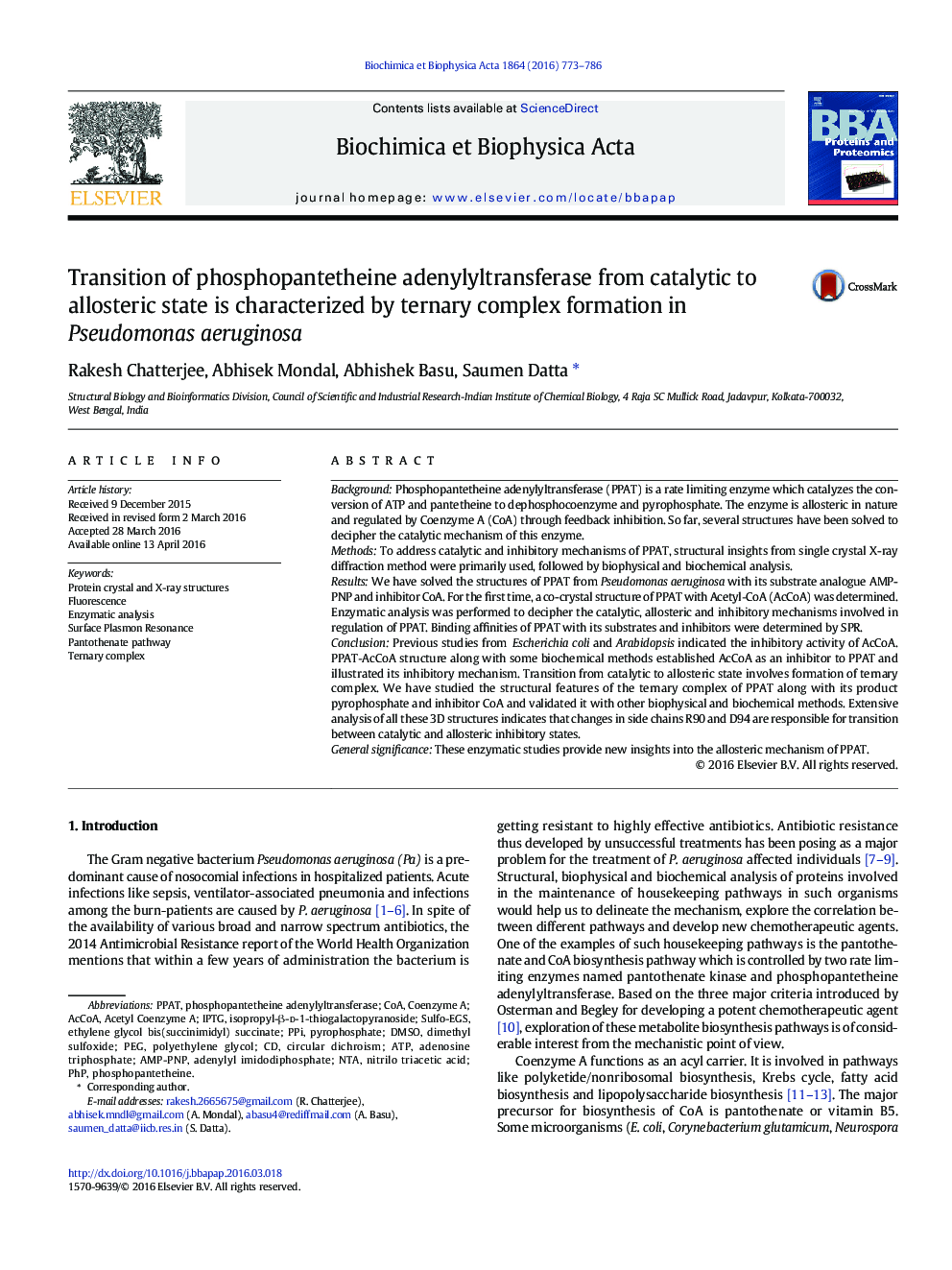| کد مقاله | کد نشریه | سال انتشار | مقاله انگلیسی | نسخه تمام متن |
|---|---|---|---|---|
| 1177689 | 962557 | 2016 | 14 صفحه PDF | دانلود رایگان |

• PPAT is an allosteric enzyme catalyzing the rate limiting step in CoA biosynthesis.
• It is regulated by CoA and AcCoA which is inhibited by feedback inhibition.
• Allosteric to catalytic states are characterized by a ternary complex.
• Ca2 + ion has an influence in the inhibition of the enzyme.
• R90 and D94 play a crucial role during such process.
BackgroundPhosphopantetheine adenylyltransferase (PPAT) is a rate limiting enzyme which catalyzes the conversion of ATP and pantetheine to dephosphocoenzyme and pyrophosphate. The enzyme is allosteric in nature and regulated by Coenzyme A (CoA) through feedback inhibition. So far, several structures have been solved to decipher the catalytic mechanism of this enzyme.MethodsTo address catalytic and inhibitory mechanisms of PPAT, structural insights from single crystal X-ray diffraction method were primarily used, followed by biophysical and biochemical analysis.ResultsWe have solved the structures of PPAT from Pseudomonas aeruginosa with its substrate analogue AMP-PNP and inhibitor CoA. For the first time, a co-crystal structure of PPAT with Acetyl‐CoA (AcCoA) was determined. Enzymatic analysis was performed to decipher the catalytic, allosteric and inhibitory mechanisms involved in regulation of PPAT. Binding affinities of PPAT with its substrates and inhibitors were determined by SPR.ConclusionPrevious studies from Escherichia coli and Arabidopsis indicated the inhibitory activity of AcCoA. PPAT‐AcCoA structure along with some biochemical methods established AcCoA as an inhibitor to PPAT and illustrated its inhibitory mechanism. Transition from catalytic to allosteric state involves formation of ternary complex. We have studied the structural features of the ternary complex of PPAT along with its product pyrophosphate and inhibitor CoA and validated it with other biophysical and biochemical methods. Extensive analysis of all these 3D structures indicates that changes in side chains R90 and D94 are responsible for transition between catalytic and allosteric inhibitory states.General significanceThese enzymatic studies provide new insights into the allosteric mechanism of PPAT.
Journal: Biochimica et Biophysica Acta (BBA) - Proteins and Proteomics - Volume 1864, Issue 7, July 2016, Pages 773–786